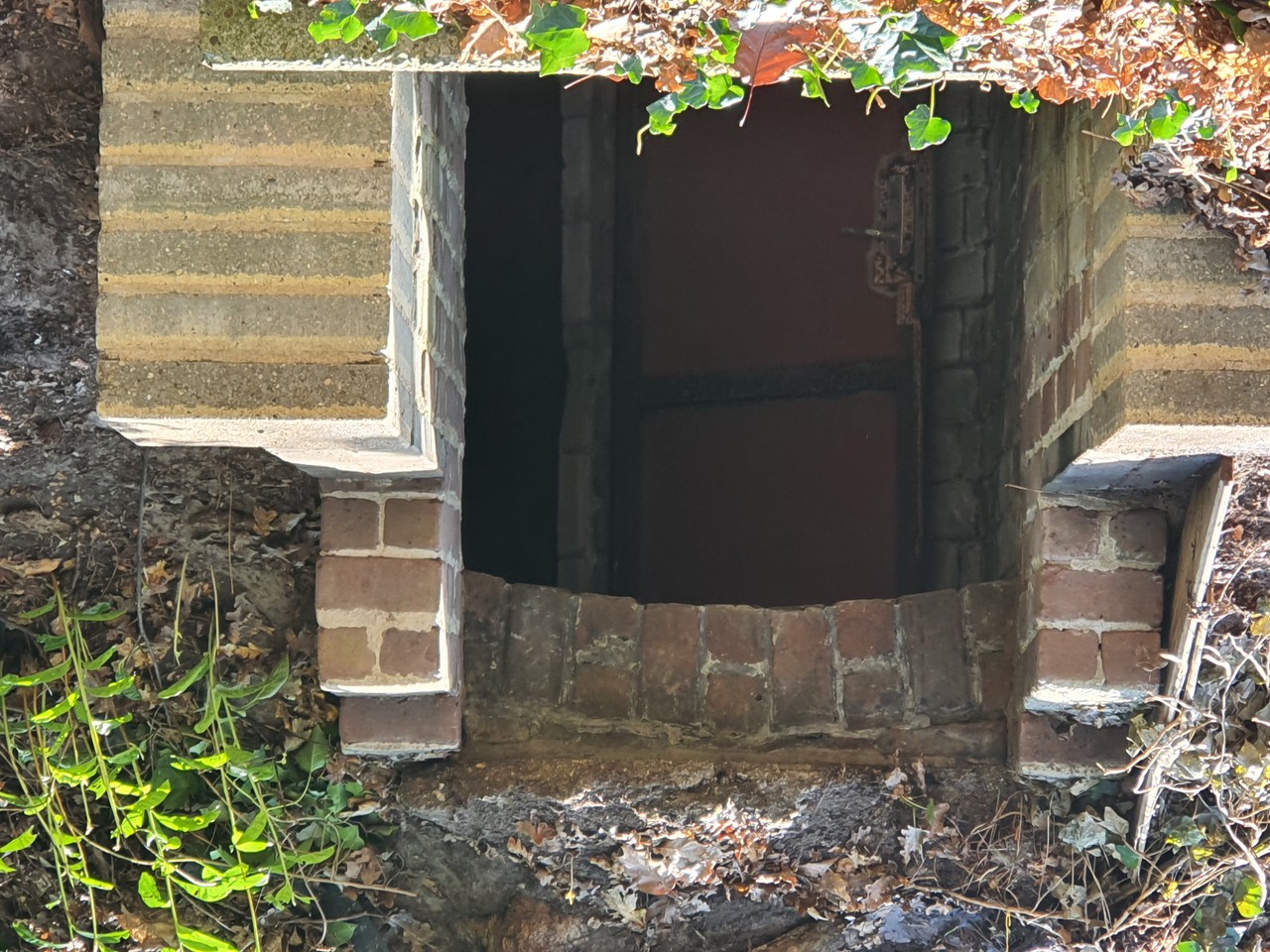Peat cutting in the 17th and 18th centuries created a lot of drifting sand around the Loonse and Moerse agricultural areas, which threatened agriculture in that area. The farmers then planted oak hedges to keep the drifting sand away from their land, with success.
In those shifting dunes a Tilburg family built a cellar in 1943 for the storage of (smuggled) products, among other things. This cellar, built of stones from Tilburg, is given another purpose at the end of 1944, that of an air-raid shelter for various families from Kaatsheuvel, among other places. The families originally lived on the Marktstraat in Kaatsheuvel, but because of the ongoing German shelling from across the Maas river, they decided to seek safer shelter. Sometimes as many as twenty people take shelter at the same time. There are straw beds in the basement and a small stove. During the day the children go to school, the parents go to work, and in the evening everyone returns. From the stories of a woman who used this room for a long time as a young girl, we know that it must have been a perilous undertaking at times. The harshly cold winter of '44-'45 did not help either, and it was really hard work at times.
The shelter is exceptionally sturdy, it is made entirely of stone, with vaults and supported by iron beams. The entrance is made so that you cannot shoot directly into it: in fact, there is a bend and a steel door. Furthermore, it is built into a dune and therefore difficult to see. Historical and archaeological research shows that there are several such shelters in the Netherlands. What is unique about this one is that it is still in its original state.
